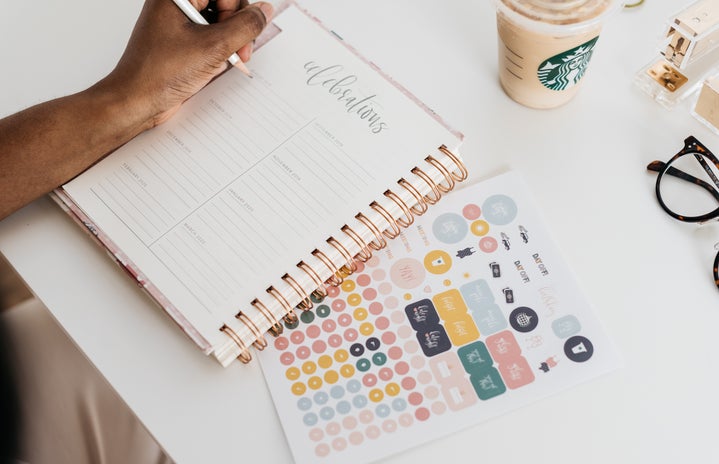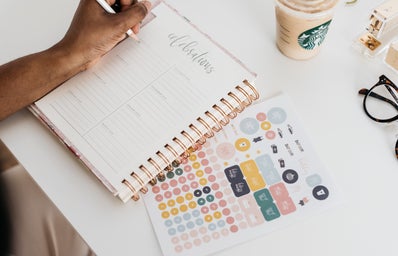As students get settled into the new semester, old habits and new goals vie for attention. Whether you’re determined to get your assignments done earlier or be more forgiving with yourself, it can be hard to commit to your plans when stress from classes and extracurriculars overtake your good intentions. You tell yourself you’ll get back on track next week, and then the next week introduces its own array of issues.
While it’s no secret that using a planner is key to having a more successful semester, there are a few simple, but effective tips for using your planner to best assist you in staying on top of your work, meeting your goals, and challenging stress.
- Do it Now.
-
By the time tests, essays and presentations are on your radar, you likely won’t have the patience for creating a schedule at the beginning of each week. Before you get too busy, fill your planner with whatever information you have in your syllabi, starting from now until the end of the semester. You can always add and edit later on, but this will provide you with a strong base and give you a clear idea of what your semester will look like. It’s much easier to address the stress of what’s ahead when you give yourself the time to draw it out instead of just taking it all in on syllabus day when you have a million things on your mind and then being surprised with it later on.
- Include The Obvious…
-
While recording exams and deadlines (and times) is a given, it helps to include the items that you don’t need reminders about, too. You may know that you have class every Tuesday and Thursday from 2:00-3:15 or that your work schedule has been the same for a year, but by having these written down for each week, you’ll have a more accurate representation of your day-to-day experience. So for those weeks you’re only thinking about what you didn’t get done, you can look and realize you do more than you think you do. This will also highlight what times are best for you to do work, what times you need to relax, and what times you need for getting ready or riding the bus. People joke about incessant time breakdowns in preparing for an event, but if that’s how you operate, putting it on paper will declutter your head and make it more clear how much time you have available for school, rest, or other activities.
- …and the not-so-obvious.
-
Include your chores and personal goals, too. If you want to shop for groceries or do your laundry on a regular schedule, write these in. If not, add them in whenever it first occurs to you that you should do them soon. Similarly, create sections for working out, journaling, meditating, or any other hobby that applies to you. Record when you’re going out with friends on the weekend or when there’s a big game on TV. These don’t always have to be given a specific time slot, but it helps to know both what you have to do and what you want to do in a day. Some think that scheduling fun events make them feel like work, but in reality, it just ensures that you’re prepared so you can enjoy yourself without task-related stresses dampening or overpowering these imperative times for yourself.
- Change your perspective.
-
Make your planner a tool of achievement, not just organization. Cross off every item you complete. This will help you feel more accomplished, recognize what you’ve done, and clarify what’s left to do. Feeling accomplished will increase your mood and make you more likely to do more tasks to maintain that feeling. If you like affirmations or inspirational quotes, include them. You’ll likely be looking at your planner multiple times a day, and it can invoke some stress looking at all of your upcoming assignments, so it’s the perfect place to add some words of encouragement.
- Personalize It.
-
From bullet journals to a digital calendar, there’s a lot of space for personalization in making your planner. Some like spending a lot of time with their planner, writing in calligraphy and using stickers. Others prefer black-and-white items with checkboxes. Some like to see the full month laid out in front of them, whereas others can only focus on one day at a time. Find what’s optimal for you so that you don’t add any unnecessary stress or discomfort to your day. You can color-code each class, group by school and non-school, or keep everything in pencil or pen. Your planner doesn’t have to be the most impressive or neat, as long as you find it helpful.
By planning in advance, including more than you think, and acknowledging completed tasks as achievements, you’ll better depict your schedule for both what it is and could be in order to use time most effectively and in a way that works for you, not just your to-do list.


